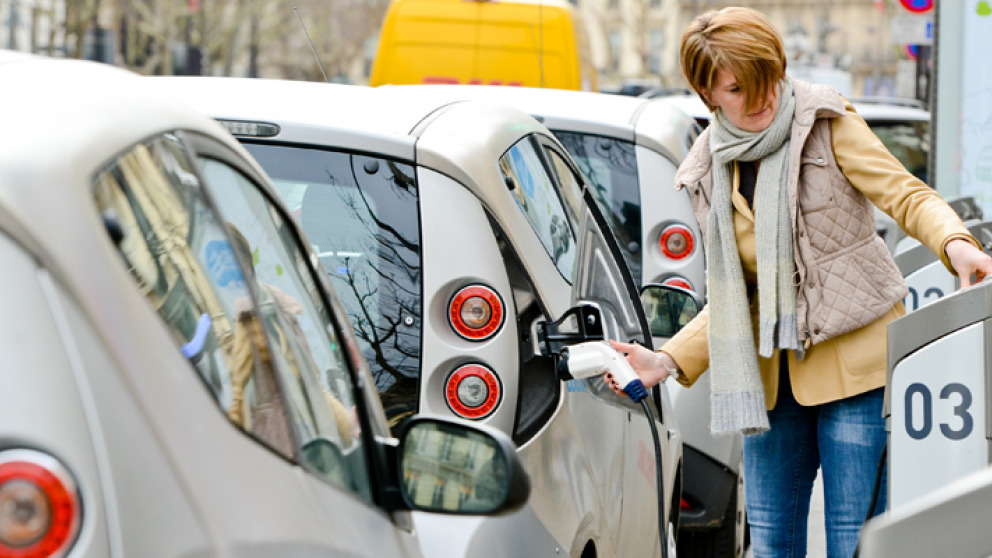Headline:
The transatlantic mobility challenge

The annual conference of the parties (COP) of the United Nations Framework Convention on Climate Change (UNFCCC) is an important venue for stakeholders to highlight the blind spots of international climate protection efforts. The transport sector was one of them at this year’s COP23 in Bonn, missing from most countries’ climate pledges under the Paris Climate Agreement. In this neglected policy area, Germany and the U.S. play an important role—as major auto industry hubs, as drivers of research, as role models, and as laboratories for socio-technical innovation.
Blind Spots in Transitioning the Transport Sector
The Paris Agreement targets require a complete global decarbonization of the transport sector by mid-century. However, in contrast to their general emission trends, carbon emissions from the transport sector have increased in both the U.S. and Germany since 1990. This undermines the emission reduction achievements in other sectors.
The decarbonization of the transport sector calls for a comprehensive approach, including technological advancements, digitalization, policy and regulatory innovation, as well as significant behavioral changes. Switching to electric or more efficient vehicles will not suffice. Germany and the U.S. will have to change their basic approach to mobility. This task is complicated by the fact that car ownership is deeply entrenched in the countries’ cultures. To Americans and Germans alike, fossil fuel automobiles are still a symbol of socio-economic status and freedom. Electric vehicles or ride-sharing passengers only rarely make an appearance in a Hollywood movie or the German “Tatort.”
The challenge is thus daunting. But the good news is: Technology and social innovations are available to quick-start sustainable mobility, economic co-benefits are involved and seizing the well-established transatlantic ties for this endeavor bears interesting advantages.
Rethinking Mobility as a Transatlantic Opportunity
Transatlantic disagreements on climate protection are well known. Creating a sustainable transport sector, however, surpasses climate protection. It fosters competitive industries. Cities in Asia as well as Germany and the U.S. are struggling with air pollution issues that produce a vast demand for low-emission transport technologies. Automakers in Germany and the U.S. will need to address this demand in order to avoid losing out to Chinese competitors. As hubs for public-private partnerships on research and development as well as technological innovation, the transatlantic partners are well positioned to be important players in the low-carbon vehicles market.
Transatlantic leadership and innovation must also encompass further sustainable mobility solutions. The current political situation limits opportunities for federal government cooperation on this matter. Subnational actors, however, can assume leadership. It is the many urban areas that are confronted with the challenges of population growth, air quality, and infrastructure modernization demands. This calls for approaches to reduce automobile use and shift toward more sustainable modes of transportation. Some measures may include improvements in public transit and improving infrastructure to allow for more walking and biking. Others may target improvements in digital information services related to traffic and stronger support for shared mobility. It will be an important task for cities to make such transitions socially sustainable, ensuring that sustainable mobility does not exclude citizens with low incomes. These sustainable mobility efforts help reduce carbon emissions and research suggests that this has further co-benefits such as improving air quality and individuals’ quality of life as well attracting innovative businesses.
Cities like Frankfurt, Munich, New York, and San Francisco are pursuing such sustainable mobility transitions. It is worth supporting further network building among active cities, for instance through initiatives like ICLEI or Cities for Mobility. Strong networks foster exchange of knowledge and best practices on (financial) incentive structures, policies, and regulation and thereby act as a driver of innovation.
The transatlantic partners should not miss the opportunity to assume leadership in a sustainable mobility transition. As early movers on technology and infrastructure change, they can benefit from export opportunities and serve as models. This can help achieve the important task that developing countries set up transport systems that are much more sustainable than those in industrialized countries.
This article was first published on November 22, 2017, on the blog of the American Institute for Contemporary German Studies.
Header image: istock/anouchka
